Churches 🢔 Religious architecture 🢔 Architectural wonders 🢔 Categories of wonders
Wonder
Antakya Church of Saint Peter (cave church)
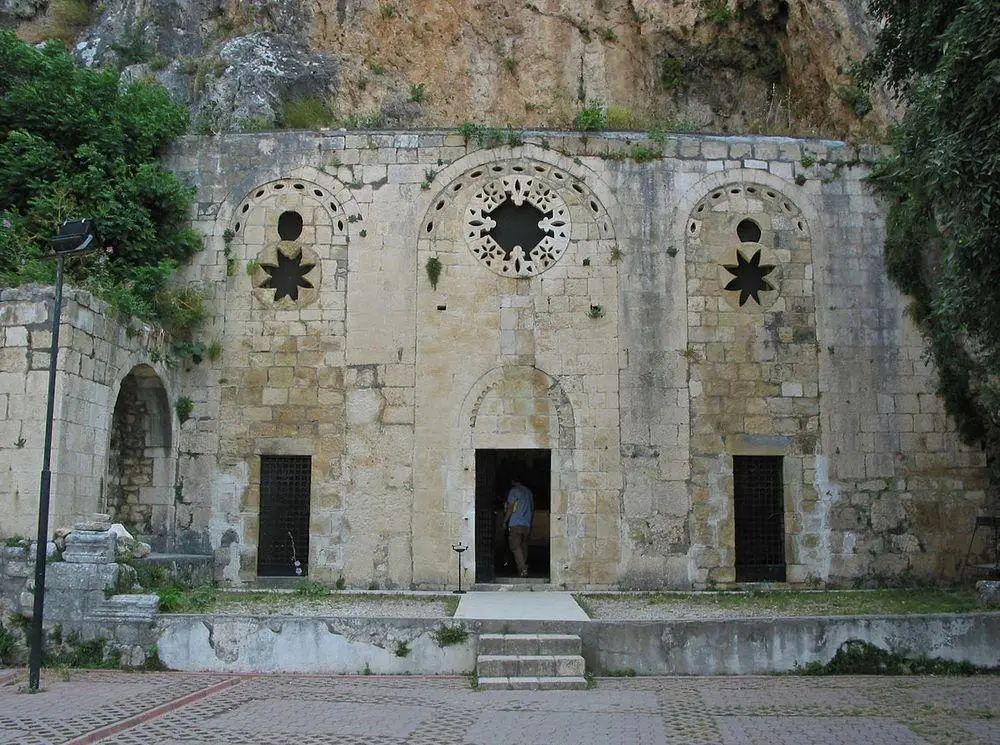
 In short
In short
One of the many candidates for the title of the oldest church in the world is a modest cave church in Turkey. Antakya Church of Saint Peter, reportedly, was created by the first apostles, maybe the Apostle Peter himself around 40 AD. But – this seems to be just a recent legend and in reality, this is a fairly new church.
 43.8%
43.8%
GPS coordinates
Name in Turkish
Alternate names
Year of construction
Map of the site
If you see this after your page is loaded completely, leafletJS files are missing.
 In detail
In detail
History
Antioch
The splendid metropolis of ancient times – Antioch – was founded by one of the generals of Alexander the Great: Seleucus I around 300 BC.
The city was named after the father of Seleucus and this was a very successful settlement. The flourishing of Antioch continued in Roman times as well – it was one of the largest cities in the Roman Empire with more than half a million inhabitants. This was an attractive, rich city with beautiful architecture, parks, and its inhabitants had a festive spirit.
Centre of early Christianity
Soon after the emergence of Christianity, some local people adopted the new religion even before the coming of the apostles. Thus this large city became a priority destination for apostles who soon after arrived here and here they planned their further activities.
Barnabas and Saul (Paul the Apostle) came here around AD 43 and several times after, also around AD 50. Apostle Peter came here around AD 44 and lived here for some time.
This was the first place in the world where a group of people was called “Christians”. This was also the birthplace of greater liberty and openness in Christianity – it was decided that Gentiles (non-Jews) can be converted to Christianity without previous conversion to Judaism. Here, in Antioch started the history of the Church of Antioch – an Orthodox church that has approximately one million followers today.
After the fall of Jerusalem in AD 70 in the Jewish-Roman war, Antioch turned into a center of Christianity.
Antakya Church of Saint Peter – the first church?
The cliff of Mount Starius (Staurin, Hac) near the center of Antioch may very well be a site of ancient rites. A little to the north is another mystery of the history – Charonion: enormous sculptures made in a live stone in the 3rd century BC. The spring which emanated at the site of the cave church was considered to have healing powers.
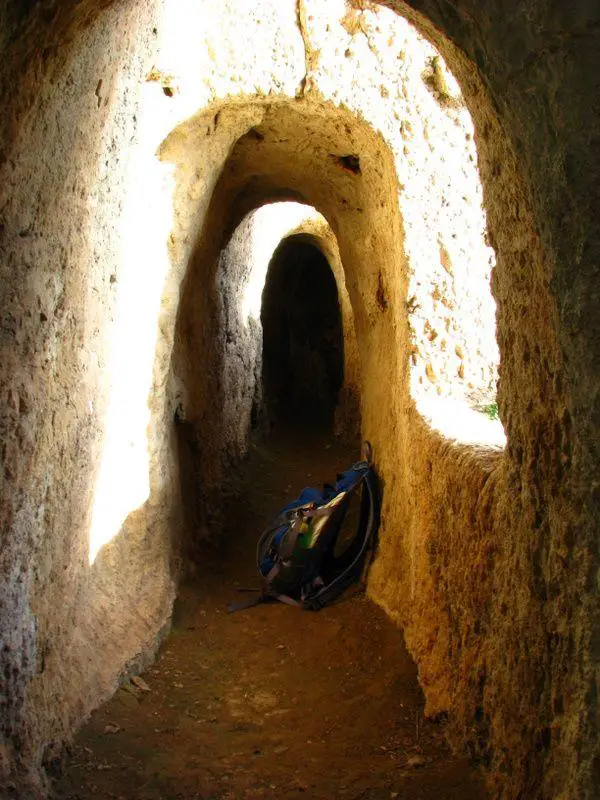
It is known that a place for prayers and gatherings of Christians existed in the city before the coming of apostles – around 38 – 39 AD. According to legends, Apostle Peter gave a sermon at the cliff and named the people around him “Christians”. He, reportedly, proposed to extend the existing cave with a spring in this cliff – so that Christians could find more place and better refuge. Some even consider that he himself helped at the extension of the church in the cliff and – why not? Saint Peter was a fisherman and Early Christians definitely were not sluggards.
Thus some Christians and historians consider that is the oldest existing church in the world. There are some arguments supporting this, e.g. some masonry and art here resemble the art of Early Christians.
So… is this a church before all other churches? After all: churches are buildings that need some permission and acceptance. One can not secretly build a public structure – sooner or later it becomes known to others. Only in 313 AD, the Roman Emperor Constantine allowed having dedicated church buildings and there are known only a few churches that existed before, such as Dura-Europos house church in Syria (AD 233 or a bit later). Could a church exist and persist through hundreds of years, next to the center of a major metropolis? Try to imagine a well visible but at the same time the somehow secret church at Champs-Élysées in Paris…
Or… not the first church in the world?
There is a more likely explanation: this place WAS not a church before the permission of Constantine in 313. There simply is not a single convincing proof for this. For example, Eusebius of Caesarea (around AD 340) describes the visit of Apostle Peter in Antioch – but he does not mention any church or digging of the cave church in these times. Other authors, including local historians, do not tell anything about a cave church until the end of the 4th century AD – even if they try to mention anything that could be of importance for the history of Christianity in this area.
Most likely, this was a site of spiritual importance for local people. And it is very likely that with the increasing domination of Christianity during the 4th century AD this paganic shrine was declared to be a Christian shrine.
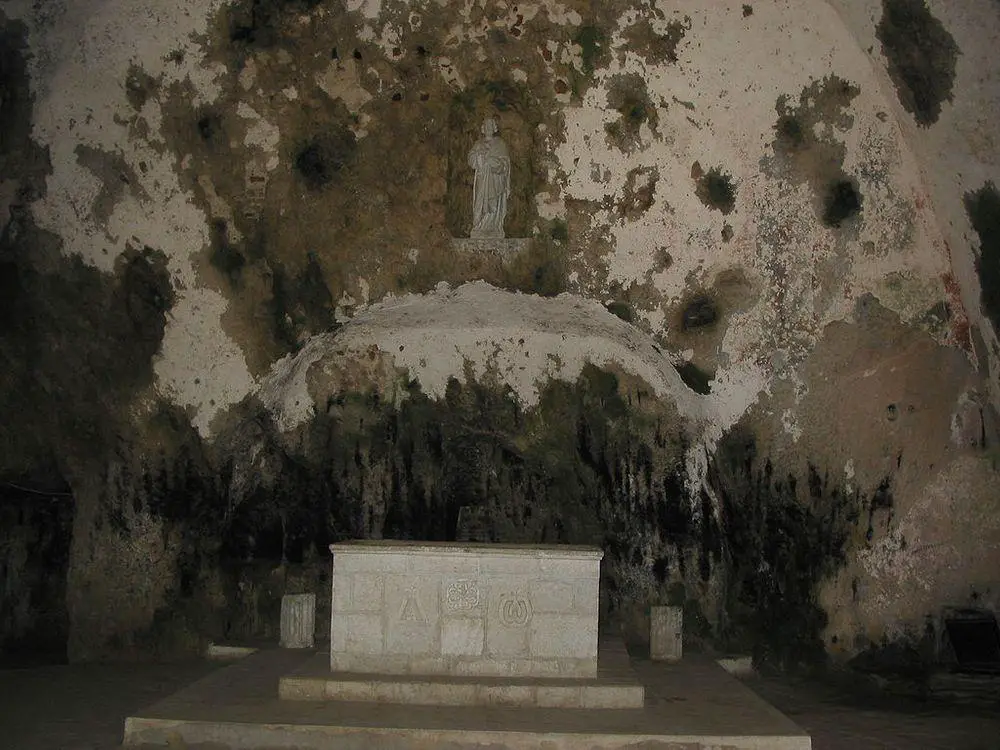
There was another church in Antioch, which was built around the first half of the 5th century AD – the so-called Church of Kusyân or the Church of Cassianus – it seems this is the same church of St.Peter often mentioned by Crusaders. This church was considered to be the oldest church in Antioch and it was located in the old city.
In 637 AD Antioch fell to the Muslim Arabs and fierce persecution of local Christians started. This was the start of the demise of this great ancient city.
Antiochia was captured by Christians during the First Crusade in 1098. Crusaders then found a church of St.Peter – but it is very likely that this was not the cave church but the church in the old city. In this church was buried also King Frederic Barbarossa (died in 1189) – although today many tourist guides declare that he is buried in the cave church.
From the medieval times to contemporary times
The first certain information about the use of the cave as a church comes only in 1580 when Muslims donated the cave to the Christians. In 1738, the anthropologist Richard Pococke wrote: “Towards the iron gate, is the church of St. John, which is hewn out of the rock, being a sort of grotto open to the west; there is no alter in it; but the Greeks, who have their service there every Sunday and holiday, bring an altar to the church, and near it, they bury their dead.” (1)
Church of St. John? And not a church of Saint Peter? Yes… because the church of Saint Peter was another church – in the center of the city.
Only in 1856 the French consul of Aleppo obtained ownership of this cave and donated it to the Catholic Church. In 1863 was built the present facade by Capuchin Friars – they made it in a local style from hewn stones. Initially in the church was located a wooden altar but since 1931 – the present, stone altar.
In 1983 this site was declared a holy site by the Vatican. In 2008 part of the cave collapsed and it is considered to be unsafe.
Church serves as a museum but there is a possibility to organize worship services. Worship here takes place on the Day of St.Peter and Paul (June 29) and Christmas.
Description
The cave church is reached by stone steps. Inside the cliff is hewn a fairly large hall – 7 m high, 13 m long, and 9.5 m wide.
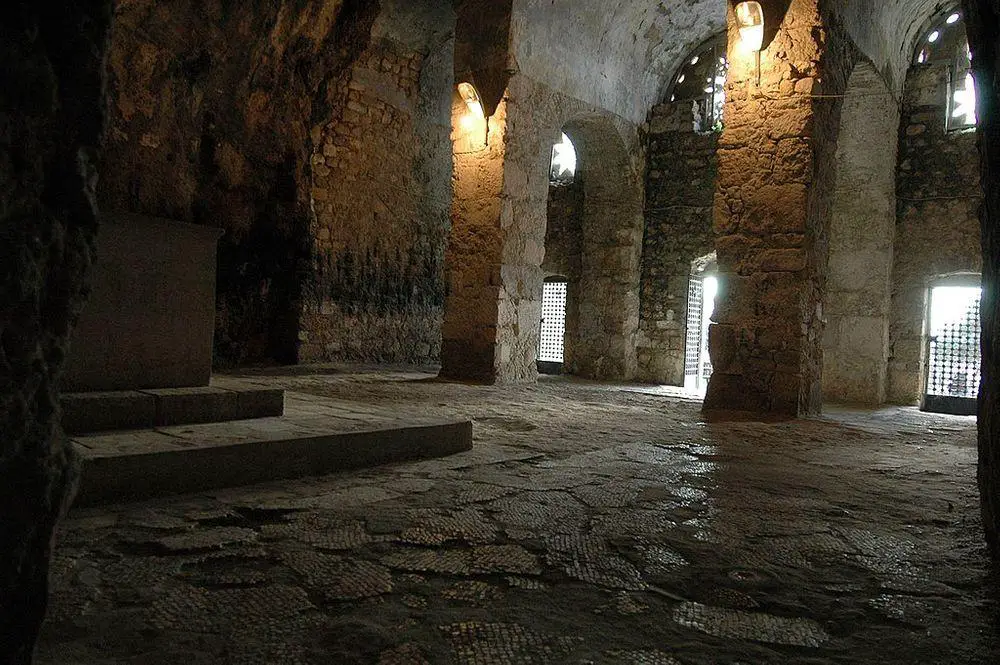
Behind the altar starts a tunnel – according to legends this was an escape passage in a case of persecutions and raids – one could run through it to another place in the mountainside. The tunnel has collapsed.
Inside the cave was a spring that could be used for baptism. Its water was considered to have healing powers. Now, this spring is quite weak due to the impact of earthquakes.
The church contains fragments of floor mosaics (which seem to be brought from other places) and faint remnants of frescoes behind the altar. Here is also a marble statue of Saint Peter (1932). Otherwise, the interior is modest. The room is divided into three naves.
The facade is adorned with three arched portals – the central one larger than the two others. To the left side stand the remains of the colonnades which in medieval times stood in the front of the facade. The garden in the front of the church has been used as a cemetery since medieval times.
References
- Jørgen Christensen-Ernst, The Cave Church of St. Peter in Antioch, Architectural Science Review, Vol.45, 2002 – Issue 4, pp. 295-297. Accessed on 1st April 2019
 Linked articles
Linked articles

Wonders of Turkey
Turkey is located at the crossroads of civilizations and has one of the richest and most diverse arrays of archaeological and architectural landmarks. Few countries in the world have experienced the rise and fall of that many distinct cultures as present-day Turkey did.
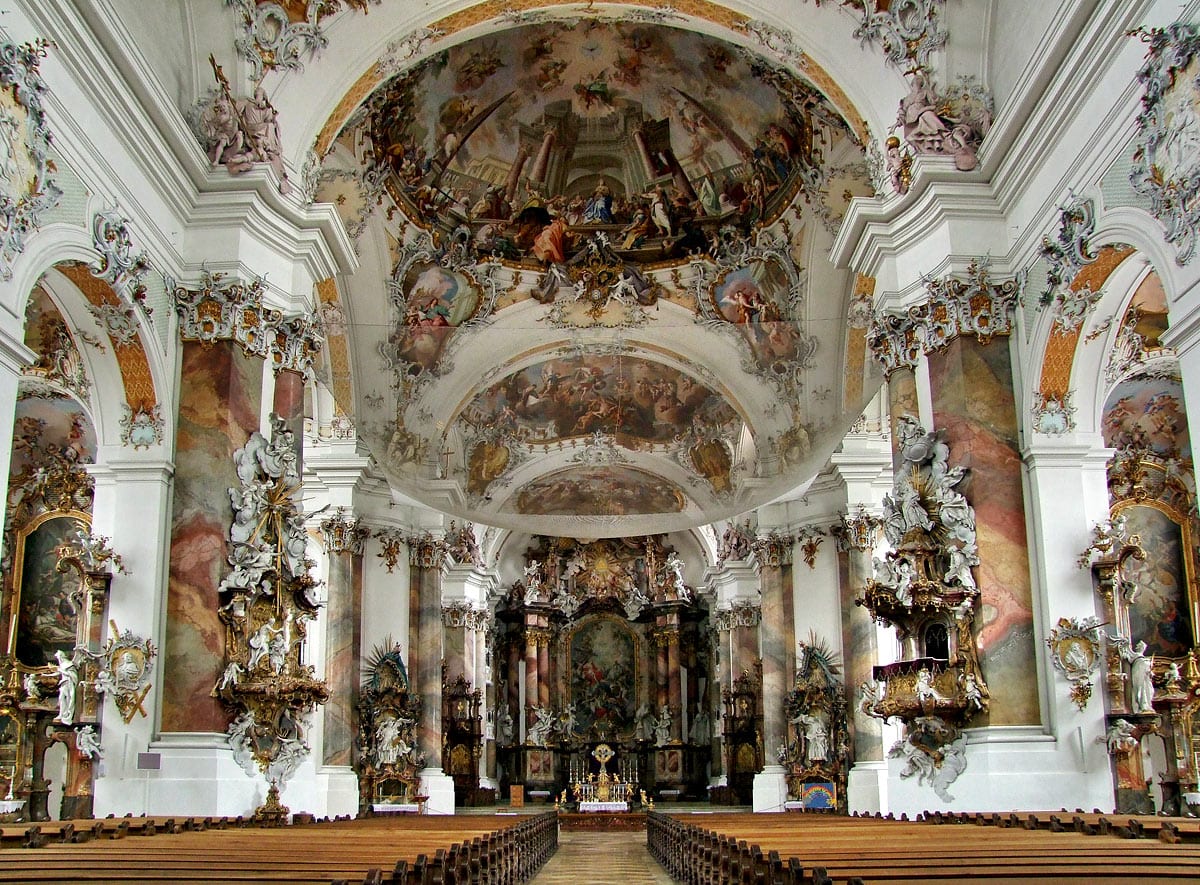
Churches
Throughout the millennia Christian churches have been the epitome of architecture and arts achievements in Western culture.
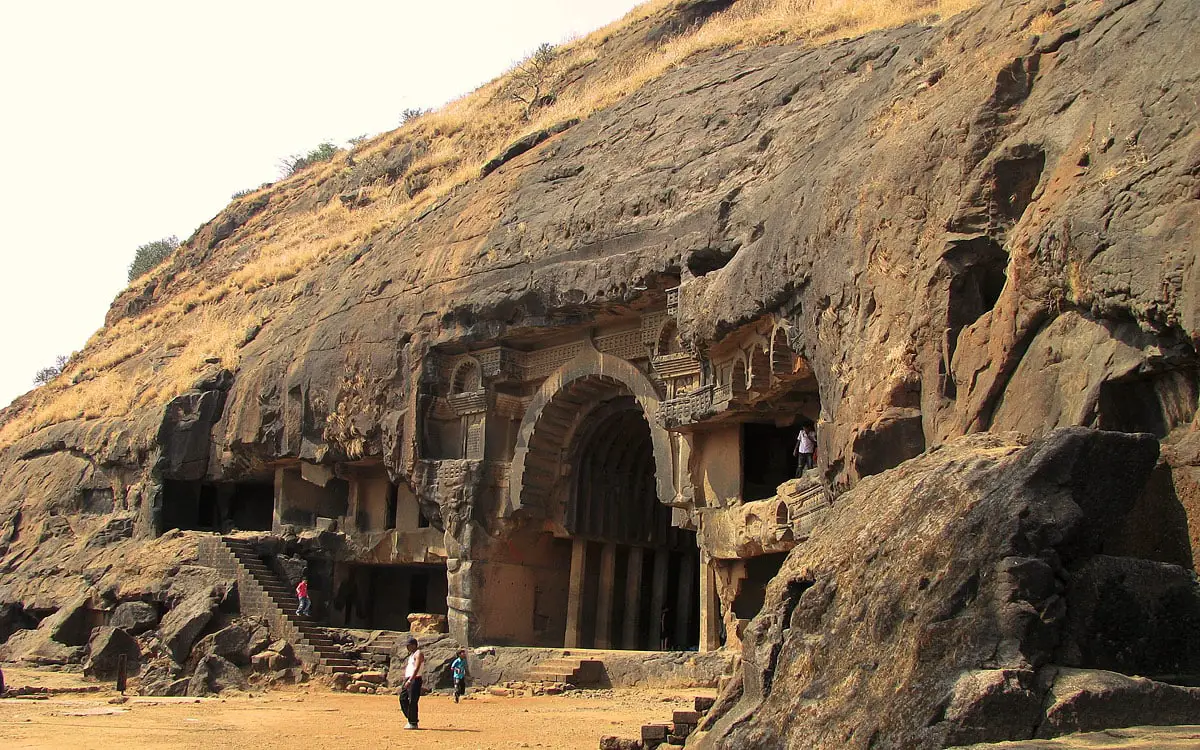
Rock-cut architecture and sculptures
Rock-cut architecture is a very ancient form of architecture – the oldest structures are more than 5 thousand years old. The resistivity of the natural stone and the constant climate inside these structures has preserved many art values around the world.
 Recommended books
Recommended books
Life of St. Peter: A Biography of the First Pope
Here is an opportunity to review your scriptural knowledge of the first pope, and to take a journey through the early history of the Church. Learn the real reason for St. Peter’s coming to Rome, and why he might have later been exiled from the city. Learn why the “Babylon” the saint mentions in his First Epistle refers to Rome. Learn who was the first writer who dared to deny that St. Peter was ever in that city. The author painstakingly proves, through ancient histories and the Church Fathers of the early centuries, that St. Peter’s residence in the Eternal City cannot be refuted.
Antioch: The History and Legacy of the Ancient Syrian City Established by the Seleucid Empire
Antioch served as the most important city of the Seleucid kingdom from the 3rd century BCE onwards, and by the 1st century CE Antioch had grown into a well-fortified and cosmopolitan Roman city, famous throughout the Roman Empire alongside its neighboring town of Daphne. This rich, beautiful city was the setting of the major gods, goddesses, myths, and legends of the Classical world; a city beloved by divine and mortal, pagan and Christian alike.


